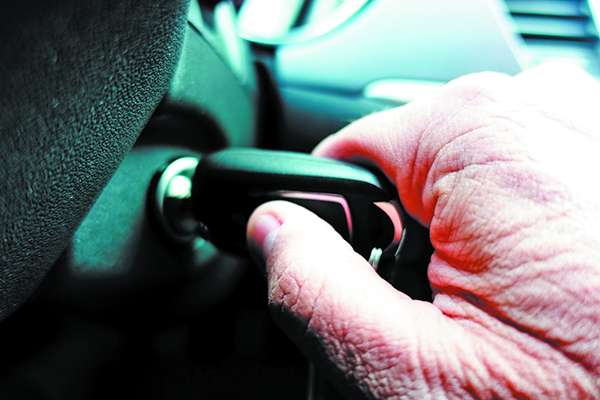Thick fog… downpours… high winds
The best advice for driving in bad weather: Don’t. Postpone your trip if roads look bad or news reports warn of treacherous conditions. Unfortunately, bad weather sometimes takes us by surprise, and some trips cannot be delayed. How to drive safely…
THICK FOG
Turn on your fog lights if you have them — or your headlights if you don’t — but not your high beams, which might cause glare. Reduce your speed enough that you could stop safely if something appears out of the fog in front of you, even if this means slowing to a crawl. Tap your brakes to flash your brake lights as you decelerate, warning drivers behind you that you are slowing. It’s illegal in some states to drive with your hazard lights on, but that can increase visibility.
If you cannot see more than a few car lengths ahead, pull over and wait for the fog to lift. Pull over as far as possible so that you don’t have to park on the shoulder and there is some distance between you and the road. Poor visibility could cause another vehicle to stray from its lane, creating danger for cars parked on the shoulder. Drive past the shoulder only if you are certain that the ground is level and solid enough to safely support your vehicle.
Turn on your hazard lights when you pull over, and remain inside your vehicle with your seat belt on.
Safest roadside waiting spot in a limited-visibility situation: Tucked behind a guardrail. Watch for the end of a stretch of guardrail, pull off the road, then back in behind the guardrail so that the metal barrier is between your vehicle and passing traffic.
DOWNPOUR RAIN
Downpours can severely limit visibility. (See the above directions for driving in fog.) In addition, wet roads reduce traction by about 30%, so reduce your speed by one-third even if visibility is good.
The first few minutes of a downpour are particularly dangerous if the region has not had rain in many days. The rain will cause oil that has collected on the road to float to the surface, creating a slick surface that further reduces traction. Drive with extreme caution, or pull over and wait 10 minutes for the oil to wash away.
Heavy rain also creates the potential for hydroplaning, in which a vehicle’s tires slide across the surface of a thin film of water, robbing the driver of both traction and steering. Replace worn tires with new ones to reduce the odds of hydroplaning. Apply the brakes very gently if your vehicle does hydroplane. This shifts the weight of the car forward onto its front tires, helping to return your traction and steering.
Important: Resist the urge to slam on the brakes, which could unbalance the car and make it even more difficult to control.
FLOODING
Do not attempt to drive on a flooded road unless you are certain that the water is no more than a few inches deep. Water depth can be very difficult to gauge, and misjudgments are dangerous — so always err on the side of caution.
Turn around and find a different route, or pull over and wait for the flooding to subside. Do not wait right at the edge of the floodwater — it could rise quickly.
If other vehicles attempt to cross, watch their progress to determine water depth. If the floodwater is only a few inches deep, then it should be relatively safe to cross. Be extremely gentle on the gas pedal, and ease your vehicle through the flood area carefully.
After leaving the flood area, gently apply your brakes, using slight pedal pressure for three to four seconds several times. This helps to “sweep” the water off the brake system surfaces so that they are dry (or at least less wet) for the next application.
If your car becomes stuck on a flooded road, remain in the vehicle with your seat belt on unless there is imminent danger that water could fill the passenger compartment. If you have a cell phone, call 911. If not, yell or signal to other drivers that you need help.
STRONG CROSSWINDS
Keep your eyes far ahead on the road when driving in crosswinds. This gives you the visual cues that you need to most easily correct your course and remain in your lane.
Avoid driving next to other vehicles when there are strong crosswinds. Side-by-side driving increases the odds that you will have a collision if the wind pushes one of you out of your lane.
On windy days, ready yourself for gusts — for example, you can grip the steering wheel and prepare to make a slight correction — when your vehicle leaves protected locations and enters open spaces. These include driving out from under an overpass… entering a cleared area after driving through a densely wooded area… driving onto an exposed bridge… or accelerating past a large truck.



